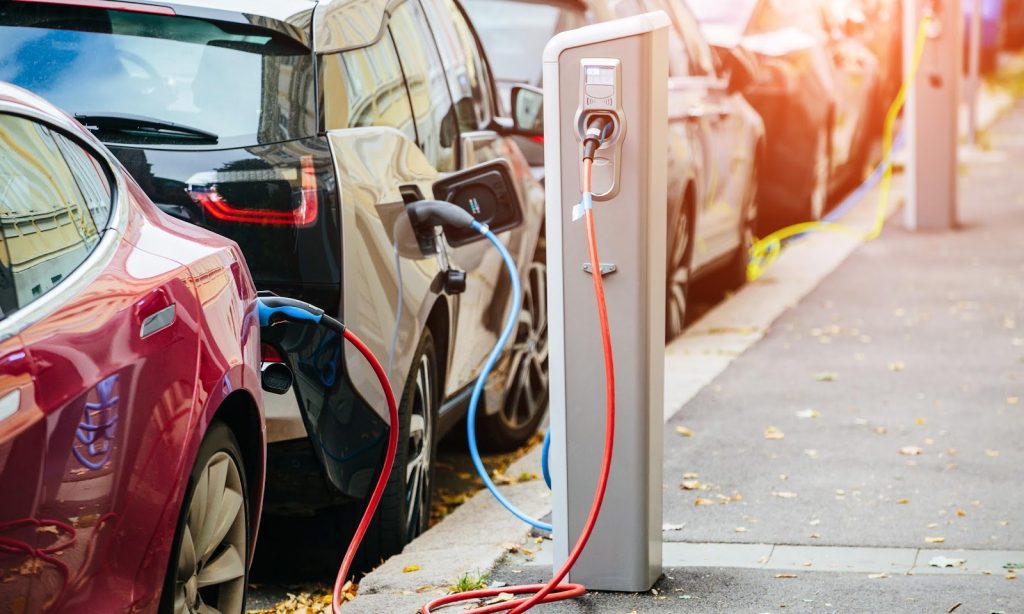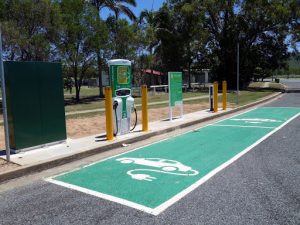Charging forward: electric vehicles and the resource industry that powers them
Over the past few years we have seen a sharp rise in the number of electric vehicles on Australian roads. Many hail these vehicles as eco friendly and believe their growing popularity is helping us to reduce our carbon footprint. However, as the rise of electric cars continues, so does the demand for electricity to power them. The question remains: where does all this power come from?

Looking into the Australian stats
Australia has been slightly behind other countries in making the shift to electric vehicles, but the local market is definitely on the move. The State of Electric Vehicles in Australia 2018, prepared on behalf of the Electric Vehicle Council, reports a 67 per cent increase in domestic electric vehicle sales from 2016 to 2017. It also forecasts that electric vehicle sales could represent more than half of Australian new car sales in the next 20 years.
A number of factors have contributed to this increase, including the availability of more affordable models; an emerging secondhand market; and a continuing trend of businesses purchasing electric vehicles as part of their fleet.
Another notable factor in this growth is the increasing availability of charging stations. A study by the International Council on Clean Transportation found a direct correlation between the availability of charging infrastructure and the uptake of electric vehicles. Australia’s Electric Vehicle Council reports that from 2017 to 2018 there was a 64 per cent increase in the number of charging stations in Australia – from 476 to 783.
Unsurprisingly, before consumers purchase an electric vehicle, they want a guarantee that they can charge them when and where they want, without the risk of being stranded without access to a power source.
Powering up the electric vehicle industry
The 2018 Australian Energy Update reports that in 2016–17 Australian coal consumption reduced by 1.0 per cent, while oil and gas increased by 1.7 and 2.9 per cent respectively. In comparison, renewable energy consumption experienced a 5.3 per cent increase in the same year and now accounts for 6.2 per cent of all energy that Australians consume.
This pattern is echoed on a global scale, and the International Energy Agency’s World Energy Outlook predicts that by 2040, renewable energy will account for 17 per cent of the market share. However, despite this increase, coal is still predicted to account for 22 per cent, gas 25 per cent and oil 28 per cent.
According to long-range forecasts by the International Energy Agency, hydrocarbons will continue to meet up to 75 per cent of the world’s energy demand in 2040.
 Wade Elofson, founder and CEO of Powered, an energy and resource-focused business development company, said that while the move to electric vehicles seems inevitable and is often perceived as a ‘green’ solution to transport, traditional forms of energy will still be required to power them.
Wade Elofson, founder and CEO of Powered, an energy and resource-focused business development company, said that while the move to electric vehicles seems inevitable and is often perceived as a ‘green’ solution to transport, traditional forms of energy will still be required to power them.
“In Australia the power for our ‘green cars’ largely comes from companies that produce coal, oil, and gas, not wind or solar like many people may think,” Mr Elofson said.
“It bewilders me when I see signs outside places like Byron Bay, which state that the shire is largely CSG free, but its residents charge their Tesla cars at night with power that comes from power plants.”
Energy companies in the driver’s seat
Mr Elofson said one day this electricity might come from renewables, but this will only be possible with the innovation of today’s energy companies.
“The companies of today that produce high-quality natural resources are the same companies that are leading the way in the development of renewals,” he said.
“It amazes me when I see protesters outside of events like APPEA 2019. The companies there are the ones that are making eco-friendly developments possible.
“APA is building solar and wind farms; Origin Energy is one of Australia’s largest solar panel retailers; Jemena, ATCO and others are developing hydrogen process plants and fuelling stations; Woodside is investing in blue and green hydrogen; Santos is using renewable energy to power its oil well operations in the Cooper Basin; and Fortescue Metals Group is looking to expand into renewable energy.”
Mr Elofson said companies that currently service the oil and gas industry also had a significant role to play in the future of renewable developments, and are already making their mark in the space.
“For example, DFI, who build foundations for oil batteries and compressor stations, are also making foundations for wind and solar farms; BeneTerra, a company that helps coal seam gas companies deal with wastewater also assist landfills to better utilise gas emissions; and Mipela Geosolutions, manages stakeholder relations for both pipelines and solar farms,” Mr Elofson said.
“Yes renewables are part of the future energy mix but we can’t forget that the companies who are helping make this possible are today’s oil and gas companies. It’s these traditional energy companies that are providing the power to make innovations like electric vehicles possible and will continue to maintain relevance through their innovation in the renewable space.”
For more information, please contact info@poweredaus.com.au or call Wade Elofson on +61 474 128 517.


